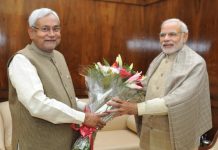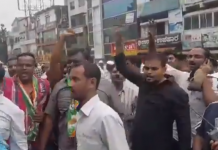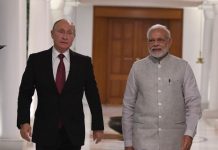The Supreme Court’s inquiry into sacks of burnt cash found at Justice Yashwant Verma’s residence has sparked judicial turmoil. His repatriation to Allahabad High Court amid transparency concerns have intensified debates on judicial accountability. A report by Mudit Mathur

The Supreme Court of India has initiated a three-member in-house inquiry into allegations surrounding the discovery of sacks of burnt cash in a storeroom at the official residence of Justice Yashwant Verma, a senior Delhi High Court judge, after a fire broke out on March 14, 2025. This inquiry has led to his repatriation to the Allahabad High Court, sparking protests and an indefinite strike by Allahabad lawyers. Justice Verma was in Bhopal when the fire broke out, while his daughter and his elderly mother were at home. Justice Verma has denied any knowledge of the cash, suggesting it may be part of a deep conspiracy against him.
Chief Justice of India Sanjeev Khanna has taken a historic step towards transparency by releasing redacted inquiry documents, including a preliminary report submitted to him by Delhi High Court Chief Justice Devendra Upadhyay, and annexing Justice Verma’s categorical denial of any knowledge of the cash found on his premises. The uploaded material also features a brief video showing a firefighter collecting a pile of charred currency notes from the still-smouldering storeroom, along with two photographs.
These efforts reflect a shift towards openness, contrasting prior cases of judicial impropriety of sitting judges of the apex court. The controversy has raised concerns about judicial accountability and public trust in the system, while a Public Interest Litigation challenges the investigation process.
Amazingly,the shocking incident came into the public domain a week later, on March 21, 2025, which raises many unanswered questions, including the ownership and disappearance of the cash and blatant inconsistencies in the handling of evidence by the Delhi Police and Fire Services.
In this context, several questions arise from public discourse. Who brought and kept the currency notes, if any, in the storeroom, and when? Most importantly, who did they belong to? Why did the Delhi Police not register an FIR under Section 326(f) of the Bharatiya Nyaya Sanhita, which prescribes punishment for arson, to determine whether the fire was an act of arson or an accident, such as a short circuit? Why did the Delhi Police not cordon off the scene of the crime? Who removed the debris or burnt currency notes (if any) on the morning of March 15, 2025? Why were the currency notes, if any, found in the storeroom not shown to Justice Verma’s family members, as he has claimed? Where are the remains of the burnt currency notes visible in the video shared by the Commissioner of Police, Delhi, with Chief Justice Upadhyay? Were they seized? If not, why? Who saw the burnt currency notes? Have the remains been disposed of? If so, why, and by whom? Who recorded the video? Where is the CCTV footage of entry and exit to Justice Verma’s bungalow premises and storeroom? Finally, does an in-house inquiry have the authority to take evidence on oath and subject witnesses to cross-examination? If not, how will the inquiry reach a definitive conclusion?
Justice Yashwant Verma was appointed as a judge of the Allahabad High Court in October 2014. Hailing from a distinguished family of legal professionals, he is the son of the late Justice A.N. Varma, a former Allahabad High Court judge, and the nephew of the late S.N. Varma, a prominent senior advocate. In October 2021, the Supreme Court collegium transferred him to the Delhi High Court. Born in 1969, Justice Verma is set to retire in 2031 unless he is elevated to the Supreme Court, which would extend his retirement to 2034. Until recently, he was widely regarded in judicial circles for his impeccable career and promising future.
The controversy has prompted an in-depth investigation, with Chief Justice of India (CJI) Sanjiv Khanna forming a three-member committee to examine the matter and repatriating Justice Verma to his parent Allahabad High Court. The in-house committee, comprising Justices Sheel Nagu, G.S. Sandhawalia, and Anu Sivaram—Chief Justices of the Punjab & Haryana and Himachal Pradesh High Courts, and a judge of the Karnataka High Court, respectively—has been tasked with conducting an inquiry into the allegations against Justice Verma.
Chief Justice of India (CJI) Sanjiv Khanna’s decision to release official documentation—albeit with “some portions and names redacted … to maintain confidentiality”—marks a significant departure from the Supreme Court’s earlier approach to allegations against its judges. In recent years, cases such as the sexual harassment allegations against former CJI Ranjan Gogoi (now a Rajya Sabha MP) and the land deal controversy involving Justice N.V. Ramana were handled with far less transparency. This move signals a shift towards greater openness in addressing judicial impropriety.
The Supreme Court Collegium, in its meetings on March 20 and 24, recommended the transfer of Justice Yashwant Varma from the Delhi High Court to the Allahabad High Court. This decision has sparked significant backlash from the Allahabad High Court Bar Association, which passed a resolution opposing the transfer and called for a review of Justice Varma’s judgments during his tenure at both courts to restore public confidence in the judiciary.
The Allahabad High Court Bar Association has also initiated an indefinite strike, starting March 25, to protest against the transfer. Its president, Anil Tiwari, has announced plans to involve other bar associations in Lucknow and demanded that the Chief Justice of India (CJI) allow investigative agencies like the CBI and ED to file an FIR and conduct a thorough investigation. The association further urged the CJI to recommend impeachment proceedings against Justice Varma.
The Bar Association’s statement, titled “We Are Not a Trash Bin,” criticized the transfer and raised concerns about the judiciary’s credibility. Meanwhile, a Public Interest Litigation (PIL) has been filed in the Supreme Court, challenging the three-member committee formed by the CJI to investigate the matter and seeking the registration of an FIR against Justice Varma. This controversy has intensified debates about judicial accountability and transparency.
Key events and timeline
March 14, 2025:
A fire broke out at around 11:30 p.m. in a storeroom near the office at 30, Tughlak Crescent, New Delhi, the official residence of Justice Varma. A PCR call was made at 11:43 p.m. by his private secretary, but no separate call was made to the fire department. Justice Varma was in Bhopal at the time, while his daughter and his elderly mother were at home.
March 15, 2025:
The Commissioner of Police, Delhi, informed Delhi High Court Chief Justice D.K. Upadhyaya about the fire and the discovery of burnt cash in sacks. The prima facie cause was determined to be a short circuit.
Chief Justice Upadhyaya was in Lucknow at the time but later briefed CJI Khanna in the evening.
Justice Varma returned to Delhi.
The Registrar-cum-Secretary to Chief Justice Upadhyaya visited the scene, accompanied by Justice Varma.
March 16, 2025:
The Registrar-cum-Secretary submitted an inspection report detailing the burnt remains in the storeroom.
The Commissioner of Police reported that a security guard claimed debris and half-burnt articles had been removed that morning.
Chief Justice Upadhyaya returned to Delhi and met CJI Khanna.
March 17, 2025:
Chief Justice Upadhyaya met Justice Varma at the Delhi High Court Guest House.
Justice Varma insisted that the storeroom was used for discarded household items and was accessible to various staff members, including gardeners and CPWD personnel.
Chief Justice Upadhyaya showed Justice Varma photographs and videos from the Commissioner of Police, prompting Varma to suggest a conspiracy against him.
March 20, 2025:
Chief Justice Upadhyaya shared evidence, including photos and a video, with CJI Khanna.
The Supreme Court Collegium decided to transfer Justice Varma to the Allahabad High Court.
Chief Justice Upadhyaya agreed to the transfer, stating it was in the “interest of better administration of justice.”
March 21, 2025:
The story was reported in the media.
Chief Justice Upadhyaya formally submitted his report to CJI Khanna, suggesting that the matter warranted a deeper probe.
CJI Khanna instructed Chief Justice Upadhyaya to obtain a written response from Justice Varma explaining the presence of cash and its source as well as identifying who removed the burnt money.
Call record details and security deployment logs were requested.
March 22, 2025:
Justice Varma submitted a written response, strongly denying any involvement and dismissing allegations as “preposterous.”
Chief Justice Upadhyaya forwarded Justice Varma’s response to CJI Khanna, along with staff details and call records.
The Supreme Court issued a statement confirming that Justice Varma would not be assigned judicial work for the time being.
March 23, 2025:
The Supreme Court made the Delhi High Court’s inquiry report and related documents public, including the video evidence.
A three-member committee, including Justices Sheel Nagu (Punjab & Haryana HC), G.S. Sandhawalia (Himachal Pradesh HC), and Anu Sivaraman (Karnataka HC), was formed to conduct the probe.
March 24, 2025:
The Supreme Court reiterated its decision to repatriate Justice Verma to Allahabad High Court.
March 25, 2025:
The committee visited Justice Verma’s residence to examine the site.
Allahabad lawyers began an indefinite strike protesting his transfer.












